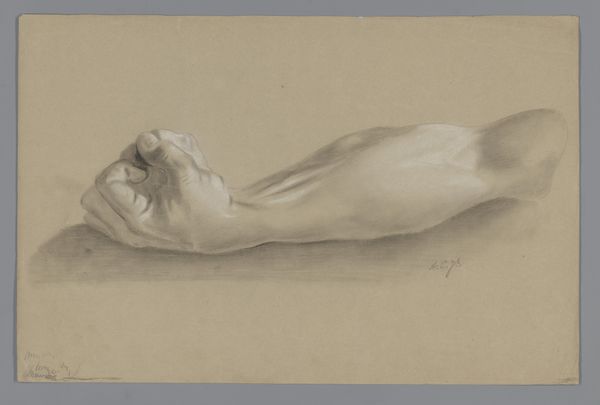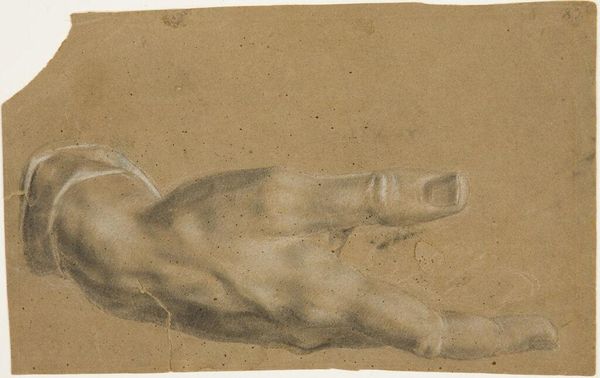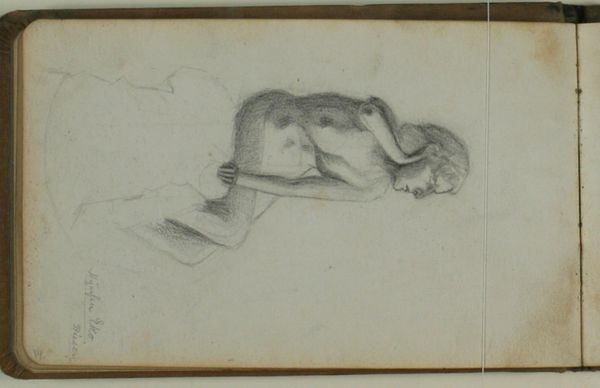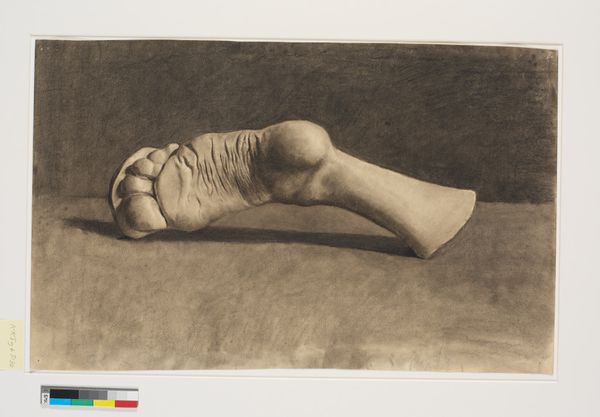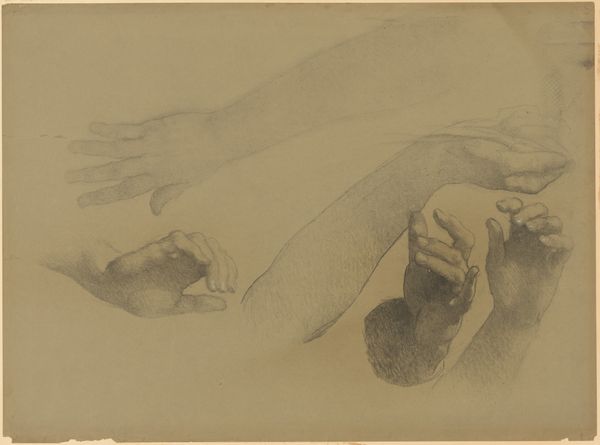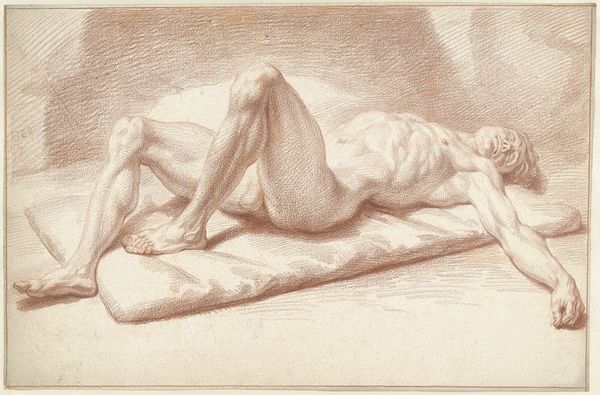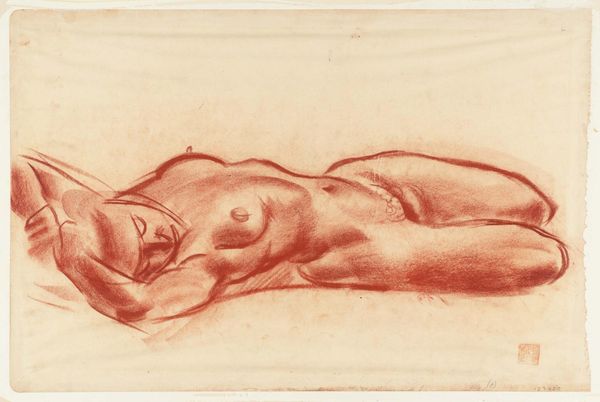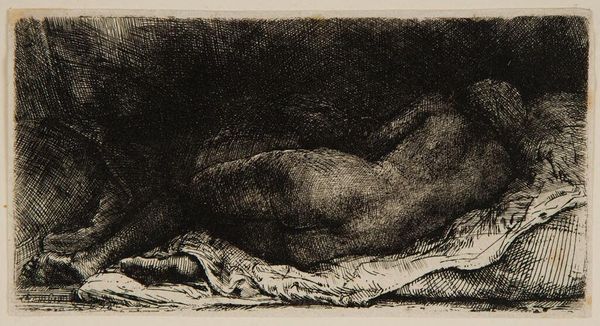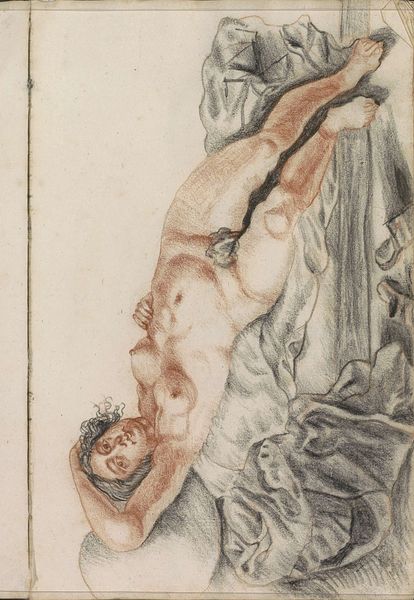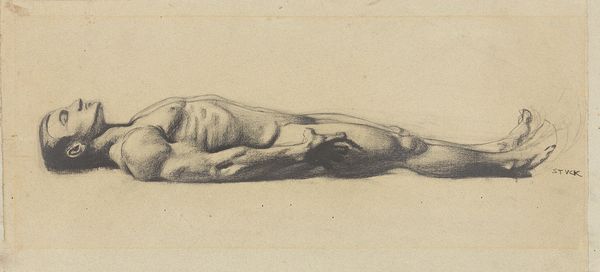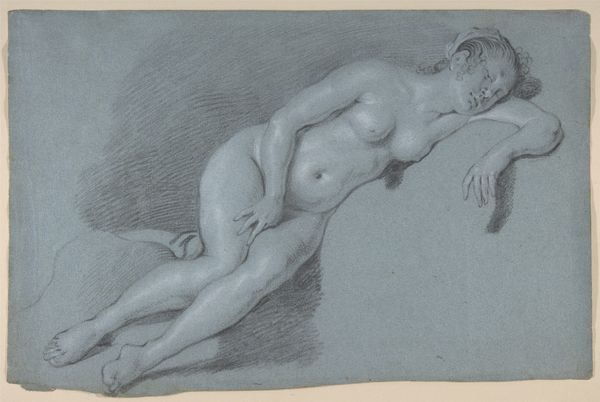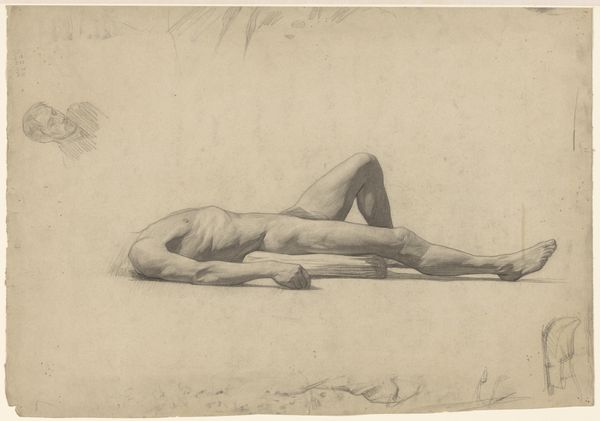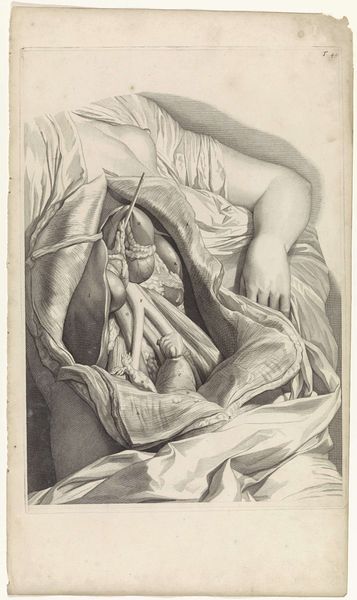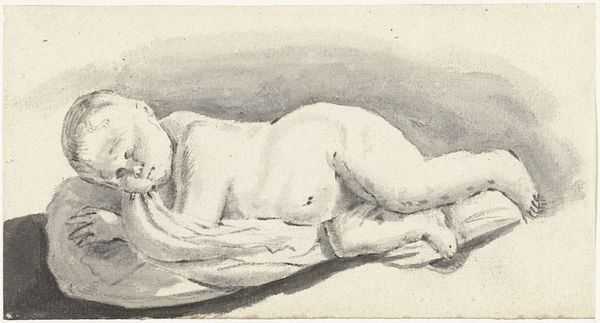
drawing, charcoal
#
drawing
#
charcoal drawing
#
figuration
#
charcoal
#
academic-art
#
nude
#
realism
Copyright: Public Domain: Artvee
Curator: This sketch immediately gives me a feeling of vulnerability and surrender. There's something about the pose, almost contorted, that hints at a loss of control, a physical yielding. What are your thoughts? Editor: This is 'Etude pour L’Idéal à l’Hôtel de Ville de Paris' by Léon Bonnat, made before 1894, a preparatory drawing done in charcoal. Bonnat, a prominent academic painter, often explored historical and mythological subjects, and this appears to be a nude study for a larger allegorical work. I am compelled by the interplay between power dynamics, social status and the depiction of women during the 19th century academic tradition. The figure itself is realistically rendered, and yet, the intended grand scale idealization contrasts strikingly with the individual, subjective experience of the model. Curator: I think that context is crucial, especially concerning the male gaze and its power structures when depicting female nudes in art. How might feminist theory influence our reception of this piece today, understanding that its genesis occurred within very specific socio-cultural and institutional norms? It calls for a reevaluation, doesn’t it? We have to address not just what is presented but how and why. Editor: Precisely. Bonnat was part of an establishment that shaped societal values through art. His academic realism had social functions within the cultural landscape of the time, upholding beauty standards of the female nude but also projecting concepts such as innocence, beauty, and virtue as it idealizes this feminine image for public consumption in locations like the Hôtel de Ville. Curator: Do you think it succeeds in projecting ideals, given its rawness, even unfinished quality? Does its status as a sketch, somehow paradoxically, speak truer to its intention? And what is the importance of academic traditions when interpreting modern understandings about figuration? Editor: Its power lies precisely in the tension between intent and execution. This 'Etude' provides a glimpse into the artistic process behind those ideals—revealing the very human effort involved in constructing those seemingly effortless allegories. Examining the institutional framework is key to deciphering how these kinds of sketches reflect broader historical forces while offering a contrasting personal aesthetic from this time. Curator: I see this less as an allegory and more as an interesting commentary on the tension that exist during Bonnat's formative artistic approach to the traditional art world of that time. The female form is laid bare but also perhaps laid claim to her body. Editor: Thank you, it's fascinating how differently the very same visual cues can stir interpretation.
Comments
No comments
Be the first to comment and join the conversation on the ultimate creative platform.
